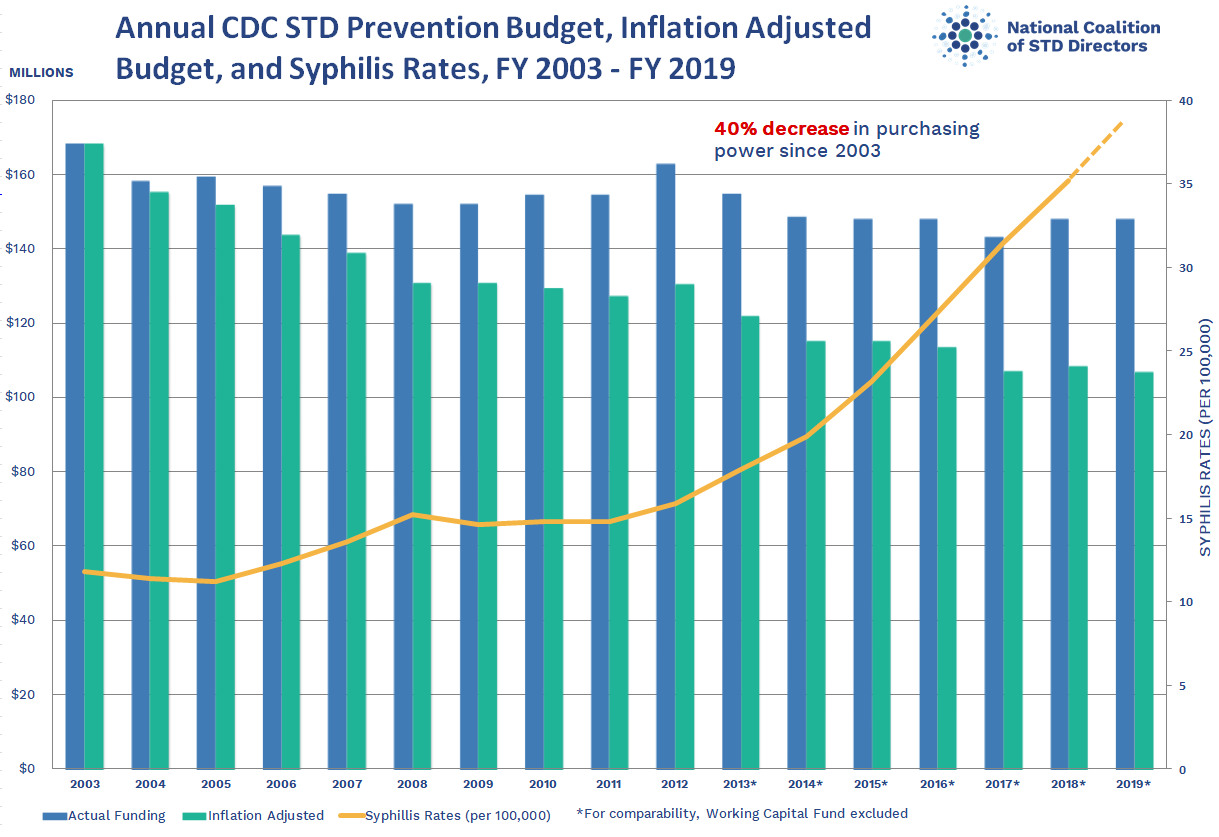Fifth-straight year of STD increases demands urgent action
NCSD calls for added federal funds and a national strategy to address the crisis

Contact: Matt Prior, [email protected], 570-878-3847
Washington, D.C. – CDC data released today show that STDs in the US hit all-time highs in 2018, after five straight years of dramatic increases. These steep increases in STDs are largely due to federal, state, and local funding cutbacks resulting in a public health infrastructure that is ill-equipped to handle this growing public health threat.
“We have an STD crisis in the US because prevention programs were sold short for years,” says David C. Harvey, executive director of the National Coalition of STD Directors (NCSD). “Our first line of defense is underfunded and overwhelmed, leaving Americans vulnerable to STD outbreaks, and that’s exactly what we’re seeing.”
NCSD is calling on Congress to act now by increasing funding for CDC’s STD prevention services by $70 million, the bare minimum it will take to support an effective response to this crisis. We also call on HHS to ensure that its Federal Action Plan on STIs, announced earlier this year, is finalized and implemented urgently. This is a laudable and welcome effort, but it must be given the support necessary for success.
Inaction will result in continued loss of American lives. STDs are a growing threat to our nation’s health. Chlamydia, gonorrhea, and syphilis infections are nearing 2.4 million cases a year – up 30 percent in five years. STDs can have life-changing and life-threatening consequences, including infertility, cancer, ectopic pregnancy, and pelvic inflammatory disease. Increasing cases of syphilis in newborns (congenital syphilis) are particularly worrisome. Cases of congenital syphilis increased 40 percent between 2017 and 2018, according to the CDC report, and deaths associated with congenital syphilis increased 22 percent.
“STDs have real health and human costs. Babies dying from preventable conditions, like congenital syphilis, is not an outcome we can accept. This is a heartbreaking symptom of our nation’s STD crisis. Without a radical shift in how we prioritize sexual health in the United States, we can only expect things to get worse,” says Harvey.
The rise in STDs and failure to adequately support prevention programs also threatens our nation’s Ending the HIV Epidemic initiative. STDs drive a substantial portion of new HIV transmission, and the STD prevention infrastructure, including public clinics across the US, is critical to the success of the Ending the HIV Epidemic initiative – for delivering testing and prevention services, including access to PrEP. As it stands, that infrastructure is struggling after decades of neglect. In recent years, more than half of local STD programs have experienced budget cuts, resulting in clinic closures, reduced screening, and staff loss.
“We cannot be shortsighted. We will not end the HIV epidemic on the back of an exploding STD epidemic. Achieving our goal of ending HIV will require a paradigm shift in how we operate – one that includes STD prevention and care and broader sexual health promotion,” says Harvey.
About NCSD
The National Coalition of STD Directors is a national public health membership organization representing health department STD directors, their support staff, and community-based partners across 50 states, seven large cities, and eight US territories. Our mission is to advance effective STD prevention programs and services across the country. NCSD does this as the voice of our membership. We provide leadership, build capacity, convene partners, and advocate. Go to ncsddc.org for more information.
